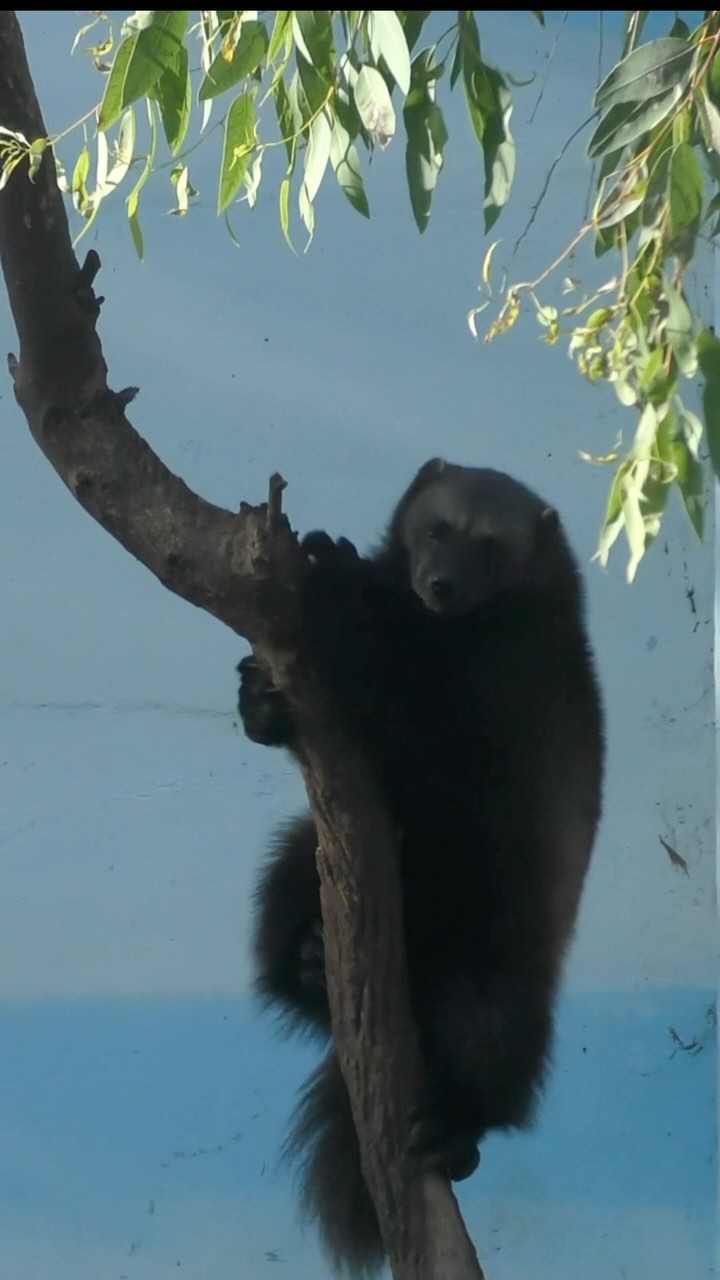- The fascinating behavior of wolverines, including their climbing habits and adaptability to different environments.
- The significance of habitat design in zoos to support natural behaviors of animals like wolverines.
- Conservation efforts and the role of zoos in the preservation of wolverine populations and other wildlife.
- The importance of understanding animal behavior for enhancing wildlife conservation strategies.
- Integrating educational content in zoo exhibits to raise public awareness and enthusiasm for wildlife conservation.
Wolverines are intriguing creatures often described as nature’s daring adventurers, exhibiting behaviors that captivate the interest of both researchers and the public. These remarkable animals are known for their exceptional climbing skills. You might find these fearless carnivores scaling trees in their enclosures, defying gravity with ease. This ability is not just an amusing quirk but rather a key aspect of their survival strategy in the wild.
In their natural habitats, wolverines can be found in the northern regions of North America and Eurasia, where they navigate harsh terrains, from mountainous areas to dense forests. Their climbing ability enables them to escape predators, hunt more effectively, and store food away from competing scavengers. This multifaceted use of climbing demonstrates the adaptability and resilience of wolverines, which serve them well in their varied habitats.
The design of zoo habitats must accommodate these natural behaviors, providing environments that encourage wolverines to exhibit their natural instincts. Trees, climbing structures, and diverse landscapes within enclosures cater to their proclivity for exploration. Building a habitat that aligns with their natural behaviors is crucial not only for the animal’s physical health but also for mental stimulation, which is essential for overall well-being.
Zoos are pivotal in conservation efforts. They create safe havens for species threatened by habitat loss, climate change, and human encroachment. Wolverines, like many others, are impacted by these global issues. Zoos play a critical role in breeding programs aimed at augmenting dwindling populations and preserving genetic diversity. Through international cooperation, breeding programs ensure the continuation of these species, safeguarding them against extinction.
Public education is a key component of conservation work, transforming zoos into powerful platforms for knowledge dissemination. Informative and interactive exhibits allow visitors to see behaviors like tree climbing firsthand, fostering deeper connections and understanding of wildlife needs. Education initiatives dispel myths, offering facts about creatures like wolverines, highlighting their ecological roles and conservation challenges.
In-depth research into animal behavior is indispensable for conservation success. For species like wolverines, understanding the nuances of their behavior strengthens efforts to design effective conservation strategies and captive breeding programs. This research aims to reduce human-wildlife conflict by illuminating how wolverines can coexist with human-occupied environments.
By integrating research findings into zoo management and habitat design, facilities can improve the living conditions of captive animals, essentially mirroring their natural environments. Such informed setups not only provide better welfare for the animals but also elevate the educational value of the zoo, offering visitors authentic experiences that highlight the importance of conservation.
Engagement with zoo visitors through educational programs ignites a passion for wildlife conservation. Realistic and immersive habitat displays, combined with informative signage and interactive sessions, provoke curiosity and inspire action. Personalized learning experiences help visitors correlate the observable behaviors of wolverines, such as climbing, with broader ecological narratives, emphasizing conservation imperatives.
To encapsulate, wolverines’ remarkable climbing abilities are more than a spectacle; they are a testament to their adaptability and survival acumen. By replicating their natural environment in zoos, supporting robust conservation strategies, and educating the public, we manifest our commitment to preserving species at risk. Understanding wolverine behavior enhances our ability to protect them and promotes an informed community eager to participate in conservation efforts, ensuring the survival of these resilient animals for future generations.
*****
Source Description
What goes up, must come down? You’ll often find our pair of wolverines climbing on or even sleeping in their habitat’s trees!
class=”instagram-media” data-instgrm-permalink=”https://www.instagram.com/reel/DEK-79NSwvh/” data-instgrm-version=”14″ style=” background: border:0; border-radius:3px; box-shadow:0 0 1px 0 rgba(0,0,0,0.5),0 1px 10px 0 rgba(0,0,0,0.15); margin: 1px; max-width:540px; min-width:326px; padding:0; width:99.375%; width:-webkit-calc(100% – 2px); width:calc(100% – 2px);”>


